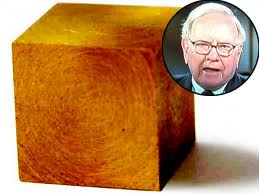Meadow Bay Drills 56.39 m of 3.93 g/t Au at Atlanta
MEADOW BAY GOLD REPORTS DRILL RESULTS INCLUDING 56 METERS OF 3.9 G/T GOLD FROM ATLANTA GOLD PORPHRY AND 105 METERS OF 2 G/T GOLD IN SHEAR ZONE IN NEVADA
Meadow Bay Gold Corp. has provided assay results from five reverse circulation and one core drill hole at its Atlanta gold mine project, Lincoln county, Nevada.
Drilling in 2011 discovered porphyry-hosted gold mineralization to the west of the historic Atlanta open pit. The porphyry-hosted mineralization is distinctly different from the gold-silver mineralization within jasperoid breccias in the Atlanta fault that were mined previously. After the discovery was made, drilling was redirected to explore the extent of the porphyry mineralization and determine if gold mineralization extends farther northward.
Gold mineralization has been identified in all five of the porphyry holes for which results have been received to date. This includes hole DHRC-11-RCN03 on northern extent of the Atlanta porphyry, and hole DHRC-11-RCN05 which is close to the centre of the porphyry. Hole DHRC-11-RCN06 also intersected porphyry-hosted gold mineralization but recovery was poor within the target interval. Holes DHRC-11-15C and DHRC-11-RCN07 intersected low-level gold mineralization. The significant intercepts are listed in the table.
Assay results were also received for hole DHRC-11-RCN02. This hole intersected the jasperoid breccia northwest of the Atlanta pit and hit an unusually long intercept of gold and silver mineralization. This hole is 50 m northwest of hole DHRC-11-07C which also encountered a long mineralized intercept but failed to reach the target depth. Results for DHRC-11-07C were previously reported.
The results obtained to date show that gold mineralization occurs within the Atlanta porphyry over approximately 300 metres in an east-west direction and 400 m north-south. The southern margin of the porphyry is terminated by the same east-west high-angle fault that truncates the jasperoid breccia-hosted mineralization in the Atlanta fault. The porphyry butts up against the Atlanta fault on the east and appears to be cut by another high-angle fault to the west. The northern limit of the porphyry has not yet been tested by drilling.
Robert Dinning, chief executive officer, commented: “Following the discovery of porphyry-hosted gold mineralization last fall, the question in the back of our minds was whether we would find gold north of the discovery holes. Confirming that mineralization extends the length of the porphyry has resolved a fundamental uncertainty. Our current focus is gaining a better understanding of the distribution of precious metals within the Atlanta porphyry. On the exploration side, we are looking at areas with similar geophysical characteristics with the intent of finding additional gold-bearing porphyries within the Atlanta district which we control in its entirety.”






